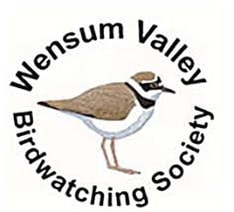|
Speaker: Drew Lyness
Reporter: Sue Gale If any of us needed inspiration to get out birding now that Spring is approaching, Drew certainly provided it. Although he said that his presentation was about birding for the love of birds (which it was) and in no way about a sell for particular reserves, it was inevitable that his enthusiastic account would make many of us keen to rush out and explore Strumpshaw and the Yare Valley. Of course, we can’t expect all of the exciting species he described to be there all of the time, or even every year, but this was a good description of the benefits to be had from thoroughly birding a local patch. For Drew, the mid-Yare valley is the place he chooses to visit when he has the time.
0 Comments
Speaker: Nick Acheson
Reporter: Sue Gale We were delighted to welcome Nick Acheson, Norfolk Wildlife Trust Ambassador and Pensthorpe Trustee, to talk to us about his new book, ‘The Meaning of Geese’. The pandemic came as a shock to us all, compounded in Nick’s case by the loss of his beloved dog and of a very close friend. What was he going to do with himself? And the answer was, follow the Geese! Between September 2020 and April 2021 Nick rode over 1200 miles on his mother’s 42-year-old bike! Not an easy task on a modern, light-weight bike, but much harder on this one. Speaker: Graham Appleton
Reporter: Sue Gale Graham Appleton impressed us all with his comprehensive knowledge of waders, and in particular of wader migration on which this talk was focussed. It seems the UK is something of a hub for migrating waders, with birds coming from all points north and heading in many different directions after a stop in the UK. Or they may stop and over-winter in the UK, like the Sanderling, some of which stay here and some travel all the way to South Africa. Whichever choice they make, studies show that waders do the same thing each year. This makes the first migration of young birds very important. Take the Black-tailed Godwits that come from Iceland, where they are doing very well indeed. They are successfully breeding in many more locations in Iceland, possibly due to climate change, but adult birds migrate before their offspring are ready to do the same. This means the young birds have no idea where they are going, leading to the establishment of new places to over-winter and indeed to breed. Speaker: Allan Hale
Reporter: Sue Gale Members were delighted as always with Allan’s great photographs and detailed knowledge of the birds to be found at Thunder Cape, but I think what most impressed us was the adventurous nature of the visits made by Allan and often also Ray Gribble. It’s one thing to travel widely, as we know they have, and be driven about by a guide to see as many bird species as possible, but it’s quite another to trek 9 miles over boulders, through woods and up hills to reach an off-grid wooden hut or two – home for two or three weeks! Speaker: Su Gough
Reporter: Sue Gale In October Su Gough reminded us of what a good speaker she is when she came to talk about ‘Tricks of the Trade’. This was an excellent grounding in bird identification for the less experienced among us, but also entertaining and enjoyable revision for the more experienced. I suspect almost everyone picked up a new trick or piece of information. Before the break for coffee Su introduced the tricks of ID by sight. |
Please feel free to read through our reports from our monthly indoor / online meetings. Archives
March 2024
Categories |

 RSS Feed
RSS Feed
